The Tuvela Theory: The Demon Breed by James H. Schmitz
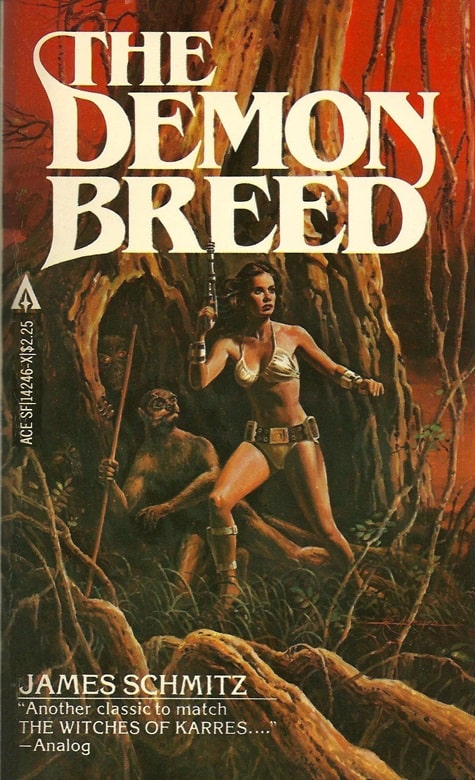 |
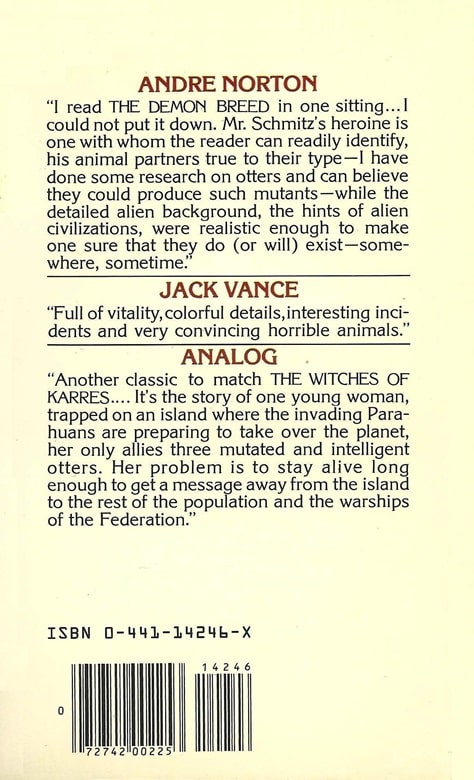 |
The Demon Breed (Ace Books, September 1979). Cover by Bob Adragna
Earlier this year, I visited my city library during a book sale. One of the things I spotted on their shelves was a novel by James H. Schmitz that I wasn’t familiar with. I’ve liked Schmitz since I discovered his story “Novice” in the collection Analog 2 — so I bought this one.
The Demon Breed came out in 1968, fairly late in Schmitz’s career, which lasted from 1943 to 1974. Like a large part of his work, it first appeared in Analog, where it was serialized as The Tuvela. Most of what he wrote was short fiction, including his best known story, “The Witches of Karres,” expanded into a novel with the same title in 1966; The Demon Breed is one of only four novels, and by today’s standards, a fairly short one.
[Click the images to breed larger versions.]
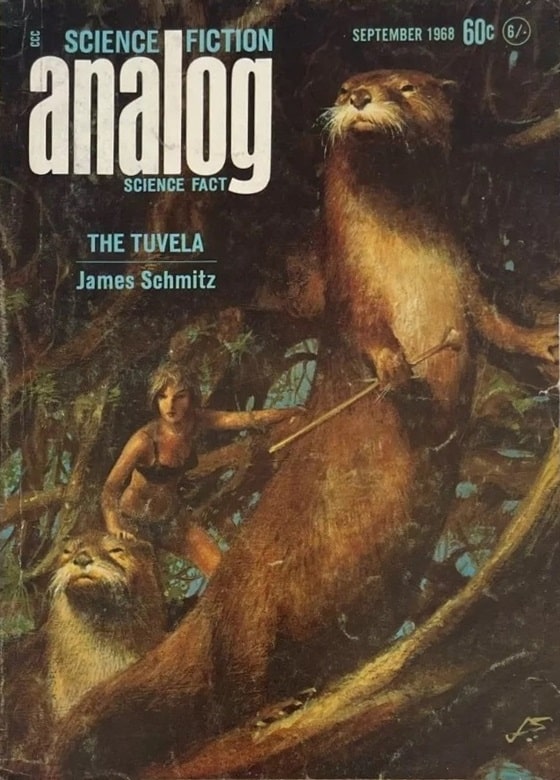 |
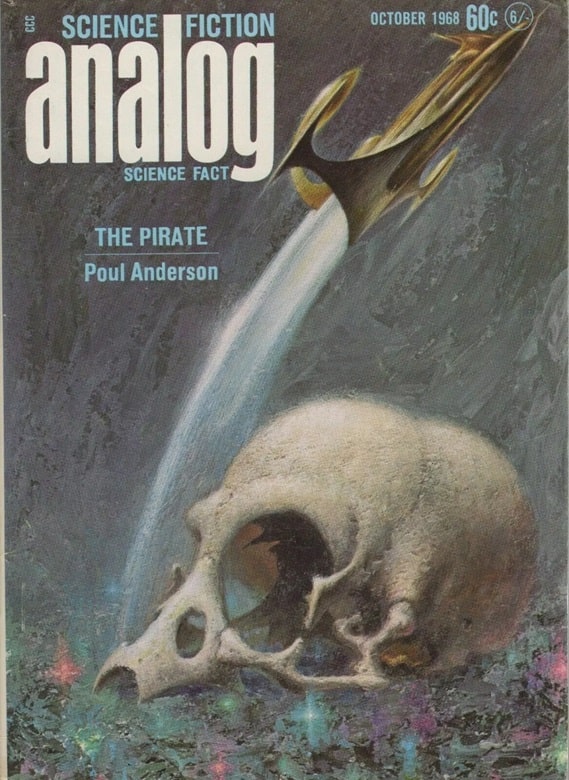 |
The Demon Breed was originally published in Analog in two parts as The Tuvela,
in September and October, 1968. Cover art by John Schoenherr and Kelly Freas
The story opens from the viewpoint of Ticos Cay, a brilliant biochemist approaching his two hundredth year, an age at which conventional life extension becomes unreliable; not being ready to die, he’s undertaken research on the lifeforms of Nandy-Cline, hoping to discover new pharmaceuticals. Unfortunately, his solitary research has exposed him to capture by the Parahuans, an alien race hostile to humanity. The viewpoint then shifts to his former student Nile Etland, who sets out to rescue him. An epilogue shows a committee of Parahuans examining what happened to their expedition, based on incomplete information.
In fact, “incomplete information” defines the Parahuan situation all through the novel. They believe themselves to be a superior race, one that has attained both immortality (in the sense of unlimited lifespans, not of invulnerability) and, in their own view, perfection. But seventy years ago, they attacked humanity and were overwhelmingly defeated.
Artwork for The Tuvela by John Schoenherr
They arrived at their own explanation: that the decidedly imperfect humans were the property of a secretive superrace, the Tuvela (who gave the story its title in its original appearance in Analog). Cay has been able to leave a message for Etland conveying this history, and enabling her to play the part of one of the Tuvela.
Schmitz was known for writing stories about exceptionally competent women, and Etland, his protagonist, is one of them. She’s not a professional adventurer like Trigger Argee from A Tale of Two Clocks and other stories, though she’s a good shot; nor is she a high-end psi like Telzey Amberdon, from “Novice” and many sequels. Rather, she’s a native of Nandy-Cline, a planet much like the way earlier science fiction writers envisioned Venus, and familiar with its dangerous lifeforms, and also a trained biochemist and pharmacologist — which gives her a variety of improvised weapons to use against the Parahuans.
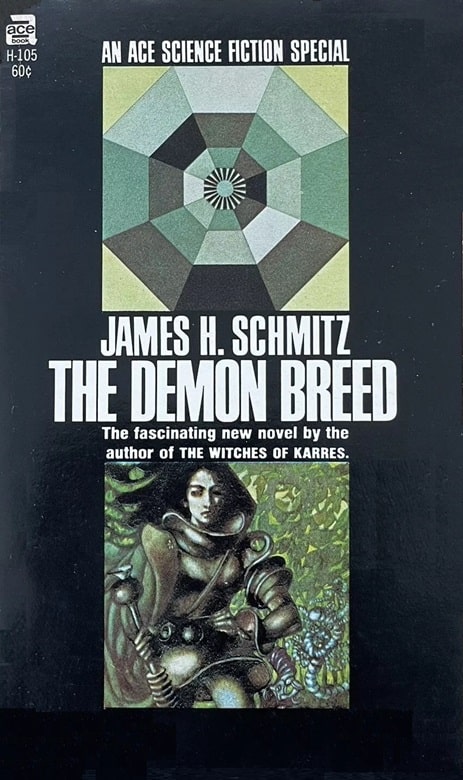 |
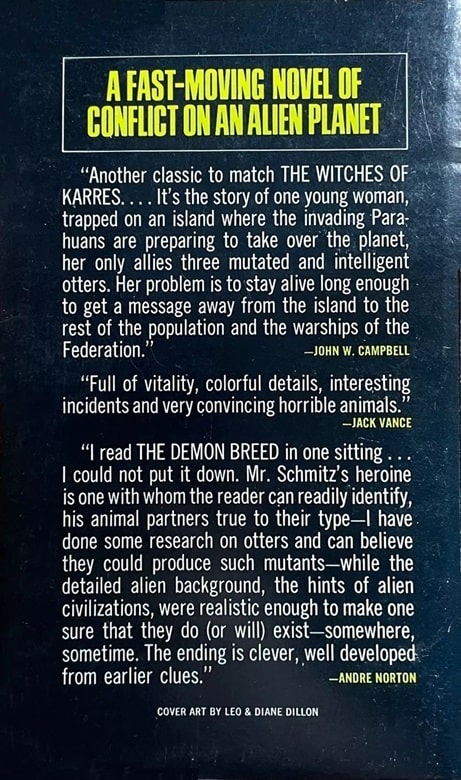 |
The Demon Breed first edition (Ace SF Special, 1968). Cover by Leo Dillon and Diane Dillon
And she’s accompanied by two genetically enhanced otters, Sweeting and Spiff, nearly ten feet long, close to humanly intelligent, and lethally capable in the planet’s waters. Most of Schmitz’s story follows the various ingenious ways she draws on these assets to rescue Cay and keep the Parahuans off balance. Etland is not actually the superhuman her foes imagine, but she’s able to play the part, thanks to a flexibility of which their belief in their own perfection has deprived them.
The Demon Breed, like many of Schmitz’s other stories (including those about Argee and Amberdon), is set within the Federation of the Hub. In this relatively late story, Schmitz has more to say than usual about how it functions:
When it comes to criminals, the Overgovernment doesn’t actually encourage them. But it maintains a situation in which the private citizen is invited to handle the problems they create. The evident result is that criminality remains a constant threat but is kept within tolerable limits . . . The limits imposed usually are imposed by agreements among citizen organizations, which also enforce them . . . In the kind of balanced anarchy in which we live now, the individual’s scope is almost as wide as he wants to make it or his peers will tolerate.
(Which accounts neatly for the presence of characters such as Amberdon, Argee, and Etland!)
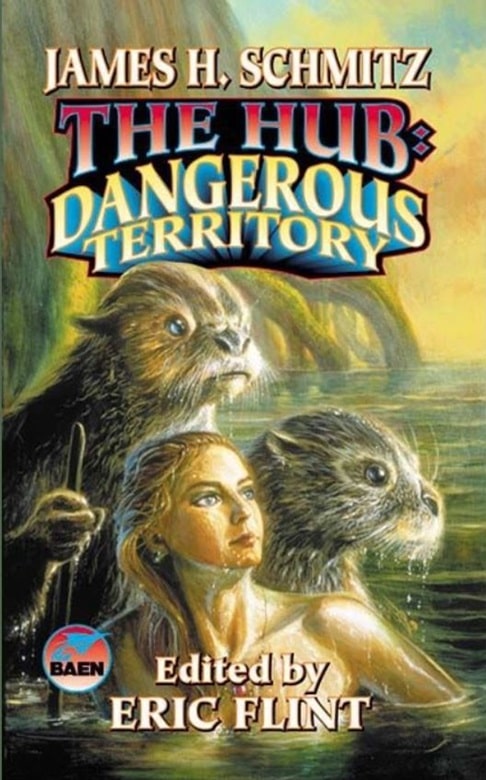 |
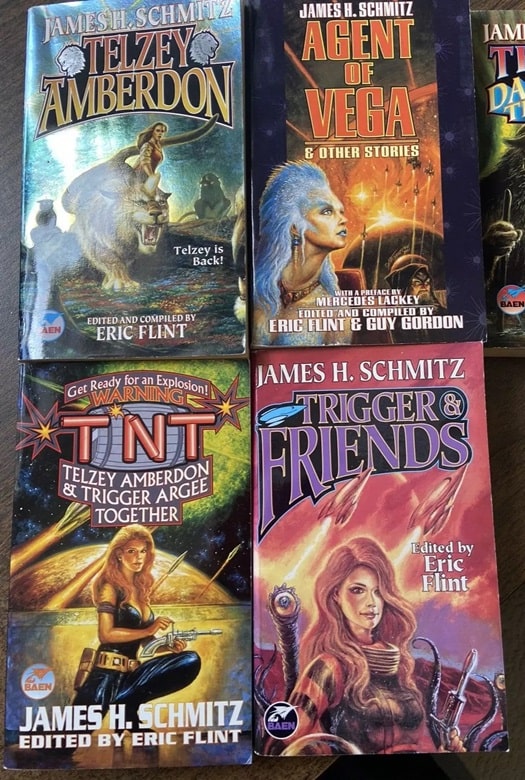 |
All five volumes of Schmitz’s collected tales of the Hub, including
The Hub: Dangerous Territory (Baen, 2001). Covers by Bob Eggleton
At the same time, the Federation does have its own forces for larger threats; and Etland’s real goal is to keep the Parahuan foes off balance for those forces to show up.
Schmitz’s main theme, in this novel, seems to be one of skepticism about any claim to perfection, and about the stasis that such a claim inspires. Etland’s real strength is adaptability — which is also the strength of humanity, the “demon breed” that the title of the book version of this story refers to. This celebration of ingenuity kept the story enjoyable. And while it’s mostly an action story, it does have a consistent theme. I’m not sure about the epilogue, which asks the reader to enter into the viewpoint of the Parahuans, but it does provide one way to hold a mirror up to Etland’s deeds, and to bring that theme into focus.
William H. Stoddard is a professional copy editor specializing in scholarly and scientific publications. As a secondary career, he has written more than two dozen books for Steve Jackson Games, starting in 2000 with GURPS Steampunk. He lives in Lawrence, Kansas with his wife, their cat (a ginger tabby), and a hundred shelf feet of books, including large amounts of science fiction, fantasy, and graphic novels. His last article for us was a review of The Day’s Work by Rudyard Kipling.
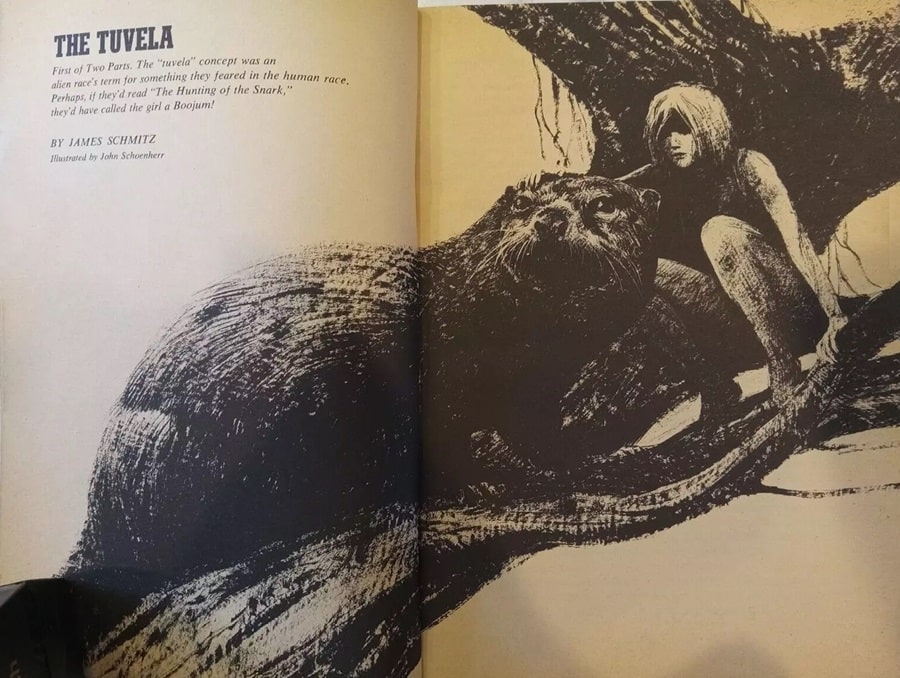
Loved this book. I had a later edition and am only learning now that it was an Ace Science Fiction Special. Thank you, Terry Carr!
This is a classic Andre Norton scenario. Exotic world. Capable but not superhuman young woman. Telepathic contact with friendly animals. Evil aliens, but not all aliens are evil.
The epilogue threw me a bit the first time I read it, but I grew to love it and have reread it (the epilogue) many times.